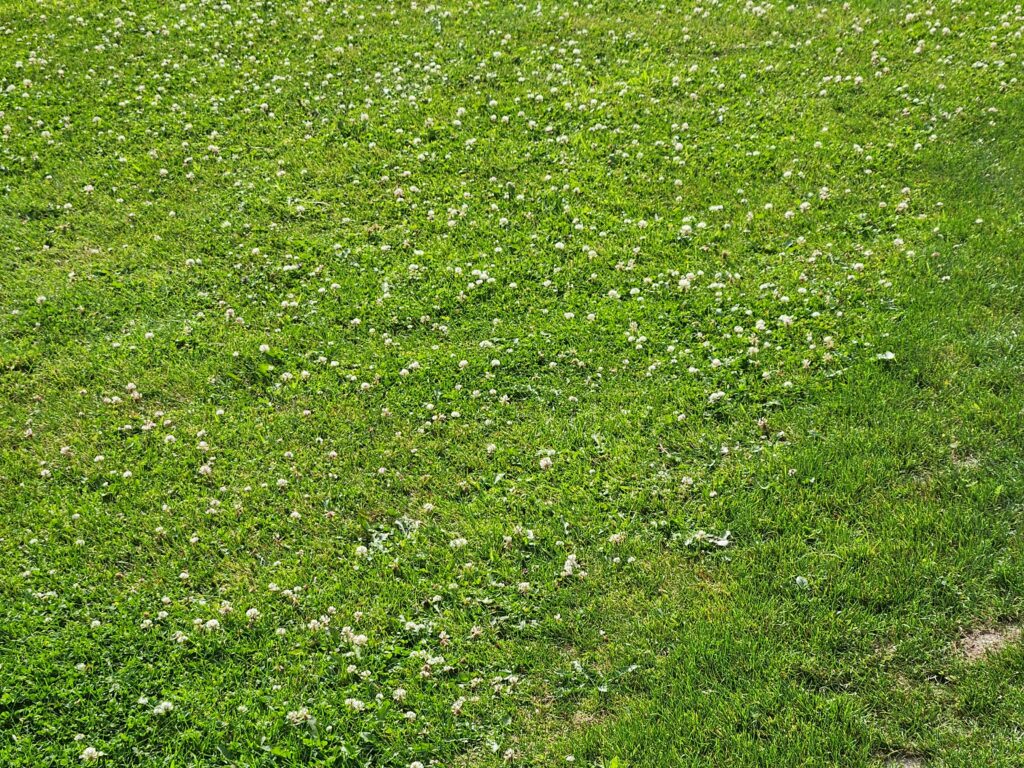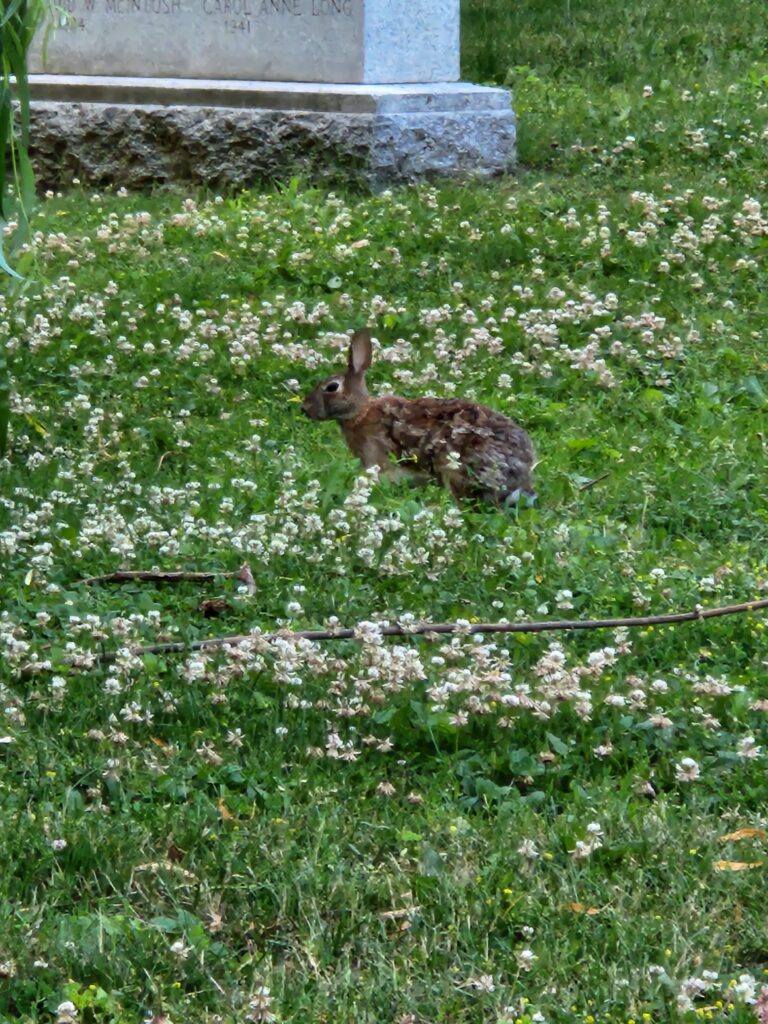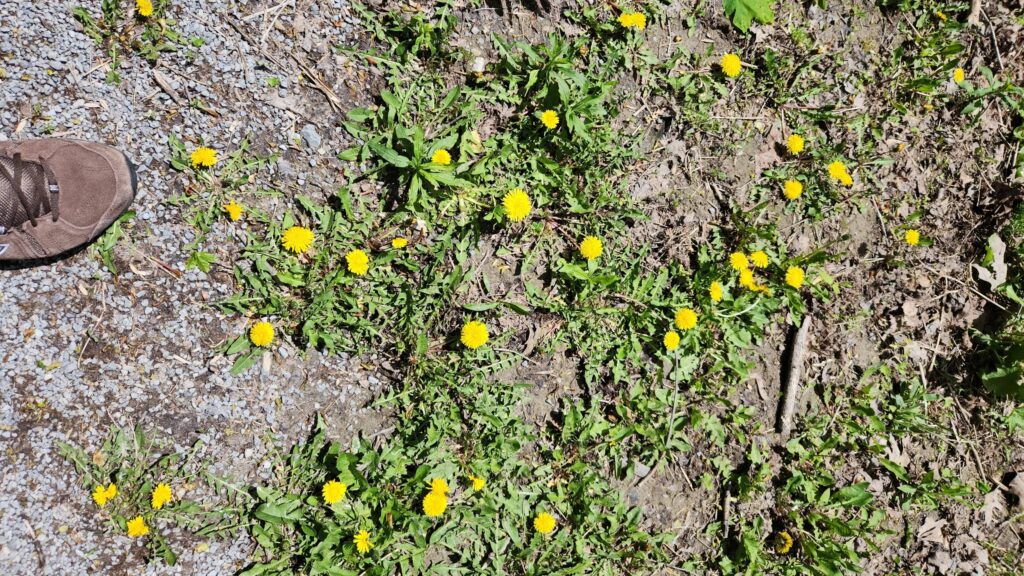Revelations come in odd places.
I had gotten off the St. Clair replacement bus the other month and was walking across Maple Claire park from the Gunns Road streetcar loop. It’s the shortest and least aromatic path to the event space where I pick up the odd shift.
Getting to work is an exercise in avoidance in the Stockyards. If you were to walk along Glen Scarlett you would pass Victory’s Kitchen, makers of various soups and sauces, perennially wafting savory sauteed onion and mirepoix across the neighbourhood. St. Helen’s Meat packers, with the abattoir fug of spilled blood and dung concentrated too heavily on certain weekdays for comfortable thought. Universal Drum, which sells containers, works to recondition steel drums by burning out whatever the contents might previously have been producing an acrid smoke that comes on like ozone, creosote, and rotten egg.
Friday is garbage day, and you’re best off avoiding the alley shortcut behind the houses. Especially in summer, the putresence of the water left in the bins is unbearable for that half kilometer, bound in as it is by the neighbourhood’s demarcating wall, channeling the sun’s heat on the last week’s detritus. Four hundred meters in, you worry that you might get used to it.
It’s no wonder I walk through the park, and on this particular day, the wind is high enough and blowing in the right direction such that none of the usual pungency makes itself known. The grass has been recently cut and the dandelions, still ringing the lampposts in places where the riding mower can’t reach, have more or less given way to a sea of white clover blossoms.
Isn’t this aroma of grass, clover, and dandelion familiar to anyone who grew up in the city’s parks? Grass going to seed unmown late in the season as you look for a long blade you can cause to whistle? The gentle sweetness of clover drying in the heat of the afternoon sun? The sharp green smell of dandelion under your chin as someone attempted to prove you liked butter?
Relevant to everyone isn’t a bad place to start.
GRASS
Particularly, Kentucky Bluegrass.
The majority of what you see walking through the park is going to be Kentucky Bluegrass, which is not actually native to North America. It’s prevalent across Europe, Asia, and North Africa. It’s a transplant introduced to North America by the Spanish. Poa Pratensis translates roughly as meadow fodder, which is what it does when it’s not being mowed to look decorative.
Although it could grow nearly a meter high if left untended and would eventually flower, the version we’re all familiar with is the freshly mown lawn. Consider for a moment what we’re doing to that plant in terms of its cultivation. We want it to thrive enough so that coverage is even, going so far as to sod it into place. We want it watered so that it will be a vibrant green. We don’t want it to get above a certain height.
Harold McGee, (who we’re going to be hearing from periodically) puts it this way: “The delightful smells of sun-warmed meadow and freshly mown lawn are the products of the physical and chemical damage that the plants are suffering. There’s the mower’s blade, of course, and the sun’s double-edged gift: enough energy to fuel life and growth, but also enough to damage their fragile machinery.”
When the grass is cut or chewed on, it releases aromatic volatiles. These are chemically similar enough that they’re referred to generically as Green Leaf Volatiles or GLV’s. These are aldehydes, alcohols, and esters that are emitted, potentially as signals to other plants and to attract or repel insects.
In specific, what we’re interested in are Hexenal and Hexenol. In various configurations these are leaf aldehyde and leaf alcohol. Their defining characteristic is that they are generically grassy; they are what you’re smelling when you smell fresh cut grass. As you may have intuited from the GLV name, it is the smell of green leaves. While other plants will typically contain some permutation of GLV, it is fresh mown green grass that is the defining sensory quality.
Which means, if you’re going to be drinking beer, a beverage made from the seed of a grass and a heavily bracted flower, it’s probably going to put in an appearance. An undecocted pilsner made with undermodified malt is likely to contain Hexanal. It will be grassy. You might find it in beers made with malt from small, local maltsters with batch to batch variance. Even well pelletized hops will contain bract matter; green leaves.
It will probably be mild, but then, consider how long the aroma of fresh cut grass lasts. Maybe an afternoon.
CLOVER
Clover, which is in bloom across the city’s parks at the moment, and worth a moment of your enjoyment, contains GLVs, but also other components. When you’re thinking about florality, it’s easily overlooked because it exists at ground level and doesn’t require much in the way of cultivation.
Rather than a grass, clover is technically a legume and part of the fabaceae family: typically nitrogen fixing peas, beans, and legumes. Part of the genus trifolium (three leaves), you’re most likely to run into white clover in the city and red clover in wild areas.
Part of clover’s distinctive scent is due to the presence of coumarin, which has a sweet vanilla like scent. “Coumarin is a chemical defense that plants stockpile in inert form and release when their tissues are damaged by crushing or drying.” Standing in the middle of a meadow of sweet clover, you would be surrounded by a vanilla florality that you might perceive as white rather than green if you suffered from synaesthesia.
White clover, Trifolium Repens, is less likely to be full of coumarin and more likely to include a small touch of cyanide. It’s usually quite low, but you wouldn’t want to eat it. That being said, it’s helpful to look at this breakdown of volatile oils. While it’s a study from an Alpine region, the plant itself is identical.
The clover you’re walking by daily contains the benzenoid coumarin (vanilla), but also benzaldehyde which smells more like almond, cherry pit, or peach pit and is therefore somewhere sensorily adjacent to cyanide. Phenylacetaldehyde is also present, and it has a honey-like character. This is unsurprising, considering that most people would think of clover as a sustaining crop for pollinators like honeybees. 2-Phenylethanol, which would smell like rose in a concentrated format, but is reduced here by the presence of other constructs. There’s a small amount of the monoterpenoid, Linalool (sweet, floral) and a significant amount of the sesquiterpenoid Germacrene-D (floral, soapy) which is mostly there to attract those honeybees.
Go stand in a field of clover the morning of a heavy dew with bright sunshine and little breeze, and you’re going to be rewarded with a scent of vanilla, sweet honey, and a slightly nutty, soapy character. Clover is a terrific descriptor for generic white florality.
DANDELION
At this point in the season, the vibrant yellow florets on the dandelions have given way to fruits, which disseminate themselves on the wind with the benefit of tiny parachutes.The puffballs guarantee that the Dandelion spreads vigorously. The name comes from neither flower nor fruit, but from the jagged leaves: dent-de-lion. Lion’s tooth.
Officially, they’re Taraxacum Officinale, which connotes through both Greek and Latin a bitter herb with medicinal purpose. The dandelion is very useful. The leaves can make up a salad, and the flowers can be used to make wine, or a Saison if you’re Fantome. You can even roast the roots of the plant in order to make a coffee substitute, not unlike Chicory (which might grow next to it on a verge or by a fence post.)
We’re building here. Dandelion has GLVs (hexenol), but that is to be expected since it has green leaves. It’s complex in that the different parts of the plant have their own properties. Harold McGee refers to the component smells as “light, fresh, and watery,” but we’re thinking about the entirety of the palate and not just the aroma.
In terms of aroma, we have some of the same makeup as clover. Phenylethanol and benzaldehyde. There’s also Nerolidol, which is slightly woody and barky, which makes sense when you think of the rigidity of the stem. When the stem breaks, the dandelion’s defense method is to secrete latex, which is found mostly in the root system of the plant. The latex is not only bitter, but alkaloid, and polyphenolic. If you pick a dandelion to hold under someone’s chin, you’re going to get aroma from both the flower and the stem.
As a beer drinker, you run into polyphenols from roasted barley and from over-concentration of hop matter. They will sit on your palate and elongate the finish of a beer and create a lightly astringent mouthfeel. To use Dandelion as a descriptor, you want to be able to picture not only a sharp green-yellow florality, but a lingering, drying floral finish. You’re thinking of noble hops and drier styles of ale and lager.



GLVs not GLV’s.
Good man. Thanks.